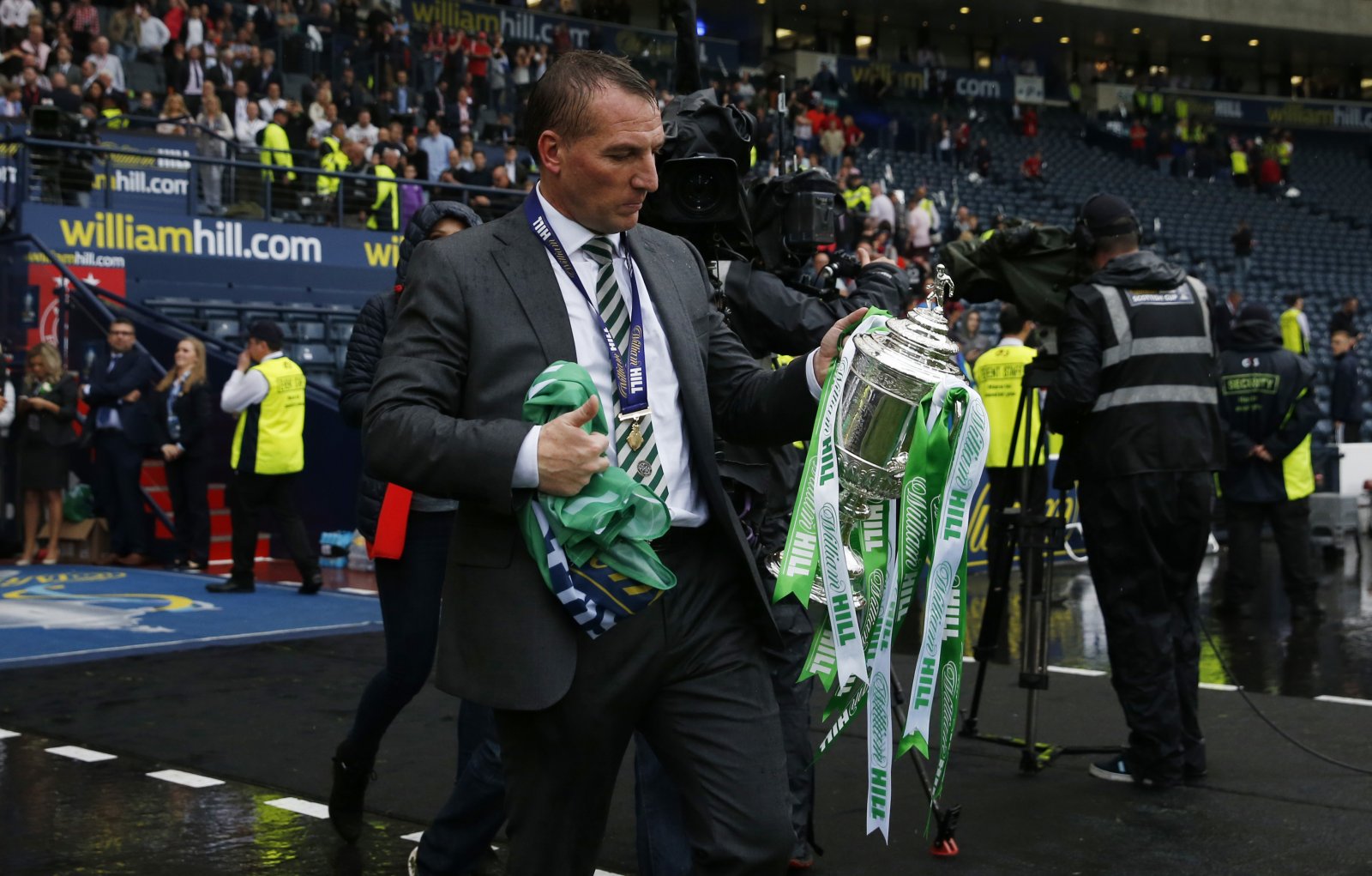Why fan engagement is the only way that Scottish football will flourish
Scottish football has had a lean spell over the last few years.
The national side hasn’t made it to a major international tournament since 1998, and they were the only home nation not to qualify for an expanded Euro 2016 last summer. On top of that, Celtic’s dominance over the rest of the league in the past six years has come almost by default as Rangers, Hearts and Hibernian have all suffered relegation and spells in the lower leagues in that period.
Last season saw Celtic play some of their best football since Rangers’ financial problems changed the face of the league, but with all traditional top clubs now back in the top division for next season, there is optimism around Scottish domestic football for the first time in quite a while.
Recently, the Scottish Football Association (SFA), the Scottish Professional Football League (SPFL) and supporters’ group Supporters Direct Scotland published the results of a survey carried out on over 14,000 Scottish fans, “designed to give supporters across the country their say on the big issues affecting the national game.” Conducted through a survey plugin on the Supporters Direct Scotland website, it gives fans a chance to have their voices heard when it comes to some of the biggest decisions facing Scottish football in generations.
There has been a lot of debate recently about the sorts of changes which should take place in the Scottish game. Whilst Celtic and Rangers are clubs with names known around the world, it’s fair to say that the country’s status within the game is in decline. From a league which could compete with their southern counterparts in England in the 1980s – arguably even surpassing it when English clubs were banned from European competitions after the Heysel stadium disaster in 1985 – the Scottish Premiership now looks more to Scandinavia for comparable competitions. Clearly something needs to be done, and over the last few seasons, some change has been taking place, but it’s vital that fans are involved in that.
It’s a cliche that sport would be nowhere without fans. And in a world where TV broadcasting rights are often more lucrative than ticket sales and merchandise, that does start to ring a little bit hollow. But in leagues like the SPFL, that’s less true: TV money isn’t particularly high, and matchday revenue is still vital. That’s why this type of fan engagement is so important – and it’s why the league and the SFA need to make sure they take it on board.
“Fans are definitely actively encouraged to provide feedback,” says Chris Samson founder of website Sports Marketing Scotland, who believes that Scottish supporters’ views are being listened to when it comes to brainstorming the ideas which could help grow football in the country.
“Through being included in the Scottish FA Congress, Supporters Direct Scotland – who own the creation of the Supporters Survey – have a seat at the table to present the views they’ve collated from fans. As a fan myself, and having provided my feedback in the surveys over the last few years, I feel as though my views are heard at the top level of Scottish football. I think even more can be done to improve this even further, but I think genuine steps have been taken to include fans opinions in the running of our game.”
The reality is that the SPFL is in a tough spot. Having watched on as the English Premier League has gone from strength to strength over the last 25 years, culminating in a barely-fathomable global TV rights deal, it’s clear that Scottish football can’t compete.
“The SPFL is already one of the best supported leagues in Europe, and possibly the world, in relation to our country’s population,” Samson says. “Our clubs are hugely reliant on the gate receipt and season ticket revenues they generate from their loyal fans.”
The Premier League’s financial model has shifted over the last few years. TV money now accounts for most of a club’s income – a potentially precarious position in a climate of falling TV viewing figures – but in Scotland, broadcast deals can still be a growing source of income. With the biggest clubs now all in the top league, there’s an opportunity to present broadcasters with exciting games – but the spectre of the Premier League and its greater pull still looms large.
The balancing act is between keeping supporters happy and trying to schedule games for times when TV audiences can be persuaded to watch Scottish football: and that means avoiding clashes with games in more popular leagues.
“We want fans packing our stadiums to the rafters, too,” Samson tells me. “In my opinion, awkward kick off times are absolutely fine if there’s been thought put behind them and every potential drawback has been considered. Ross County playing against Kilmarnock at an early kick-off time on a Saturday, or even a midweek evening match, doesn’t make sense. It’s around a four-hour drive between the two stadiums. But having Celtic v Rangers, or the now-returning Edinburgh derby, on at these times, and hopefully on at slightly different times to English games, makes sense to me.”
But that ability to balance the scheduling of games to times when fans want to go to the stadium as well as times when English games aren’t on isn’t just about maximising revenue. Even from a business point of view, maximising a TV audience is only worth it if the camera will capture packed stands and passionate noise. Empty stadiums don’t play well on screen, and could hit viewing figures in the long run.
This is why supporters’ surveys matter so much in a situation like the one in which Scottish football currently finds itself. Even if lucrative TV deals were a possibility if games were played at odd times, in order to make it work, fans would need to go to the games, too. That’s why their views on the changes must be taken into account. It might sound like the most basic form of fan engagement, but it’s also the most important.
But in the end – barring a switch to a version of the game played in summer like in Ireland, and which could clash with tournaments like the World Cup – Scottish football is always going to come up against the Premier League. It’s a fact of life, and one which Samson believes needs to be accepted.
“I’ve spoken to a lot of people over the last few years working in various roles across football in Scotland, and the general consensus from them has been we can’t keep looking south. We’ve got to focus on ourselves, making improvements within the constraints that are currently binding us.”
Since 2012, Scottish football has suffered from a lack of money, a lack of competitiveness and, often, a lack of interest. But with big teams and recognisable names like former Liverpool manager Brendan Rodgers now boosting the league’s prestige, there does seem to be some genuine optimism around the Scottish game, and although there’s a lot of change needed to help the SPFL evolve, that enthusiasm doesn’t look misplaced.
“We’re such a well-supported league as it is,” adds Samson. “If we keep focusing on the fans, continuing to engage with them and delighting them, then Scottish football can flourish.”
About author
You might also like
SPORTEL 2021: Day One Recap
This year’s prestigious SPORTEL convention kicked off in sunny Monaco today, welcoming a host of familiar faces as well as plenty of new ones. Doors opened at 8:30am with businesses
Six Founding Riders Set To Bring The Vision Of The UCI Track Champions League To Life
Olympic Champions, UCI World Champions and World Record holders join the new track cycling competition debuting in November 2021 The UCI Track Champions League is delighted to announce that six
Sports related spending to soar this summer as pre-pandemic life resumes
New insights from eBay Ads UK reveal the potential for brands to engage with an excited but nervous nation as sports events get back on track As pubs and indoor










